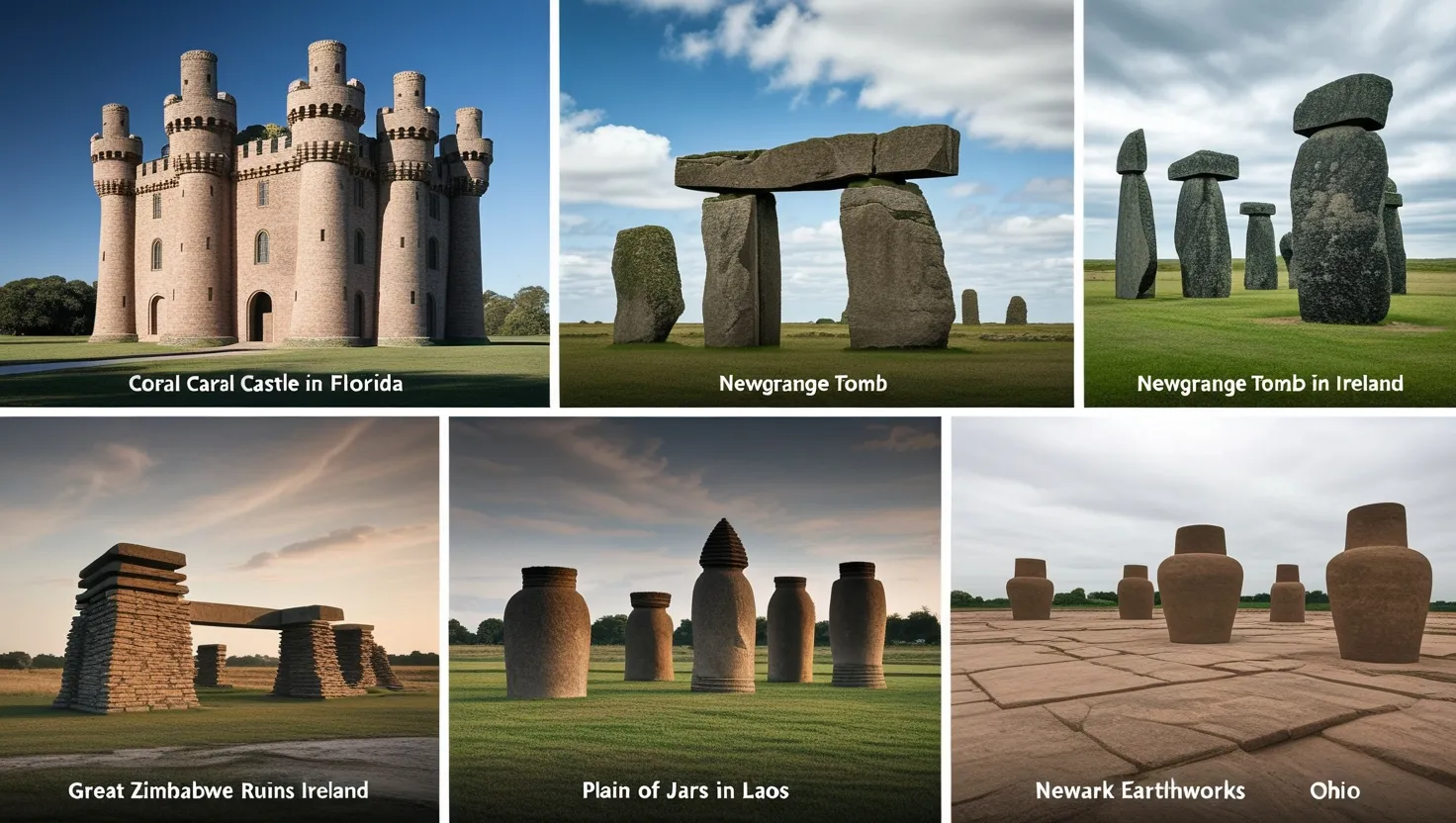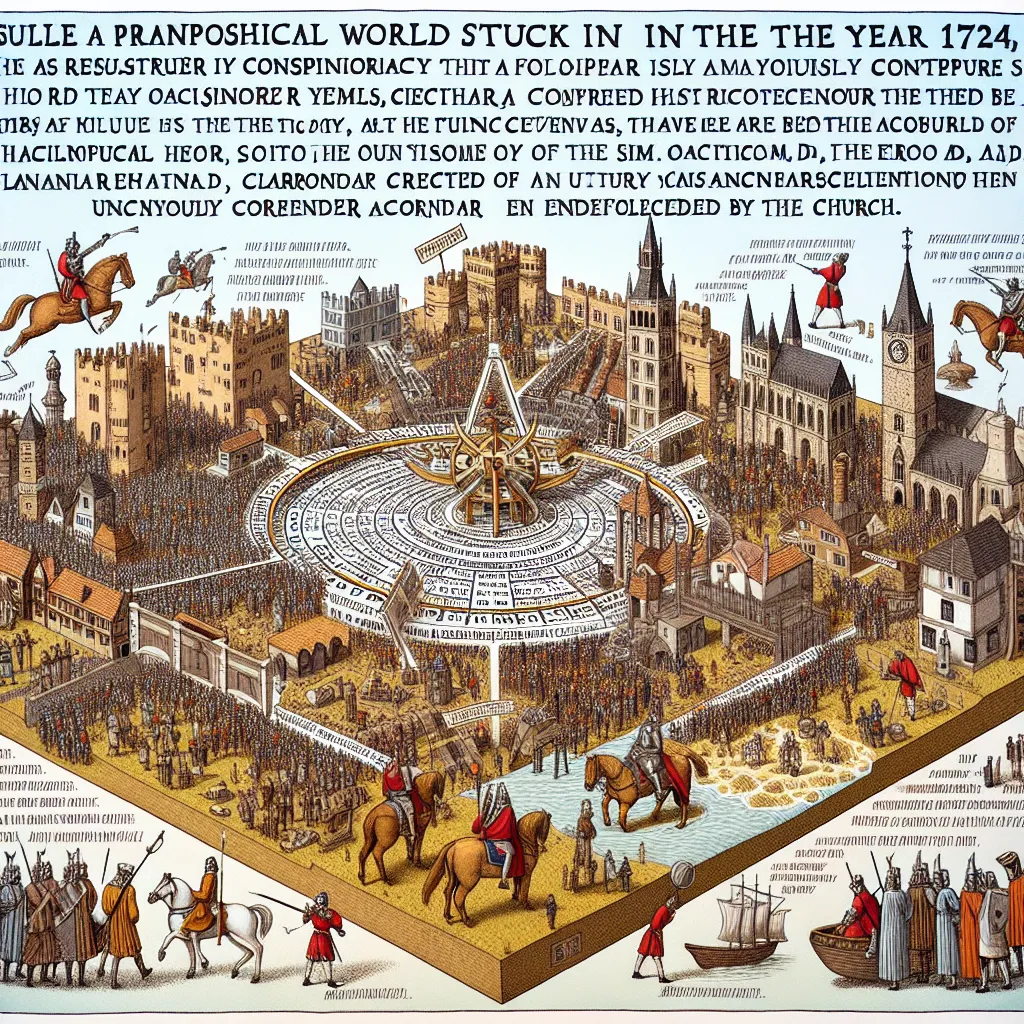Ancient builders have left us with awe-inspiring structures that continue to baffle modern experts. These architectural marvels, constructed without any surviving documentation of their methods, challenge our understanding of historical engineering capabilities. Let’s explore five of the most inexplicable historical structures that have no building records.
The Coral Castle in Florida stands as a testament to one man’s determination and ingenuity. Edward Leedskalnin, a Latvian immigrant, single-handedly built this massive stone structure between 1923 and 1951. What makes the Coral Castle truly remarkable is that Leedskalnin accomplished this feat without the use of modern equipment or assistance from others.
The castle consists of over 1,100 tons of coral rock, with some individual blocks weighing up to 30 tons. How did a single man, standing just over 5 feet tall and weighing only 100 pounds, manage to quarry, transport, and precisely position these massive stones? This question has puzzled engineers and scientists for decades.
Leedskalnin claimed he knew the secrets of the ancient Egyptian pyramid builders, but he never revealed his methods. Some theories suggest he used leverage and pulleys, while others propose more exotic explanations involving magnetism or even levitation. Regardless of the method, the Coral Castle remains a testament to human ingenuity and perseverance.
“The secret to my success is that I have both my feet planted firmly in the air.” - Edward Leedskalnin
Moving across the Atlantic, we encounter the Newgrange tomb in Ireland. This Neolithic monument predates the Egyptian pyramids and Stonehenge by centuries. Built around 3200 BCE, Newgrange is a marvel of ancient engineering and astronomical knowledge.
The most striking feature of Newgrange is its precise solar alignment. On the winter solstice, a beam of sunlight penetrates the roof-box and illuminates the inner chamber for just 17 minutes. This alignment has remained accurate for over 5,000 years, despite shifts in the Earth’s axis.
How did the Neolithic builders achieve such precision without modern surveying tools or a written understanding of astronomy? The construction techniques used to create the waterproof corbelled roof and the intricate spiral carvings on the entrance stone remain a mystery.
What celestial knowledge did these ancient builders possess? How did they pass down their expertise through generations without written records?
Traveling to southern Africa, we encounter the Great Zimbabwe ruins. These stone structures, built between the 11th and 15th centuries, showcase advanced masonry techniques that have left historians and archaeologists puzzled.
The most impressive feature of Great Zimbabwe is the Great Enclosure, a massive circular structure with walls up to 36 feet high and 20 feet thick. These walls were built without mortar, using a dry-stone technique that required immense skill and precision.
The builders of Great Zimbabwe left no written records or illustrations of their construction methods. How did they manage to create such perfectly balanced and durable structures without modern engineering knowledge? The site’s sophisticated drainage systems and complex architectural design further add to the mystery.
“Great Zimbabwe is unparalleled in its testimony to the lost civilization of the Shona people.” - UNESCO World Heritage Committee
In the hills of Laos, we find the enigmatic Plain of Jars. This archaeological landscape is dotted with thousands of massive stone jars, some weighing up to 14 tons. These megalithic structures date back to the Iron Age, between 500 BCE and 500 CE.
The purpose and method of creation of these jars remain shrouded in mystery. Local legends suggest they were used to ferment rice wine for giants, while archaeologists propose they may have been part of burial practices.
What tools and techniques did the ancient Laotians use to quarry, transport, and shape these enormous stone vessels? How did they manage to distribute them across such a vast area without leaving any traces of roads or transportation methods?
The lack of written records or pictorial representations of the jar-making process leaves us with more questions than answers. The Plain of Jars stands as a testament to the ingenuity and capabilities of ancient civilizations, challenging our assumptions about prehistoric technological limitations.
Finally, we turn our attention to the Newark Earthworks in Ohio. These geometric mounds, built by the Hopewell culture between 100 BCE and 500 CE, display a level of astronomical precision that rivals modern observatories.
The Newark Octagon, a part of this earthwork complex, aligns with the moon’s northernmost rising point - a cycle that occurs only once every 18.6 years. This alignment is so accurate that it has been used to correct modern lunar calendars.
How did the Hopewell people achieve such precise astronomical knowledge without telescopes or written calculations? What purpose did these elaborate earthworks serve, and how were they constructed with such accuracy using only primitive tools?
“The Newark Earthworks are to geometry what Stonehenge is to astronomy.” - Brad Lepper, Ohio History Connection
The absence of building records for these structures leaves us with tantalizing mysteries. Were there advanced knowledge systems that have been lost to time? Did ancient civilizations possess capabilities that we are only now beginning to rediscover?
As we ponder these questions, it’s worth considering how our own modern marvels might be perceived thousands of years from now. What aspects of our technology and knowledge might be lost or misunderstood by future generations?
These inexplicable structures serve as a humbling reminder of the ingenuity and capabilities of our ancestors. They challenge us to think beyond our current understanding of historical technological capabilities and to remain open to the possibility that there is still much to learn from the past.
What hidden knowledge might these structures hold? How might studying these ancient marvels inform our approach to modern engineering and construction challenges?
As we continue to unravel the mysteries of these inexplicable structures, we are reminded that human ingenuity knows no bounds. Whether it’s a single man moving massive coral blocks or entire cultures aligning earthworks with celestial bodies, these sites stand as testaments to the remarkable achievements of our ancestors.
The next time you encounter an ancient structure, take a moment to consider the knowledge, skill, and dedication that went into its creation. You might find yourself looking at history - and human potential - in a whole new light.






